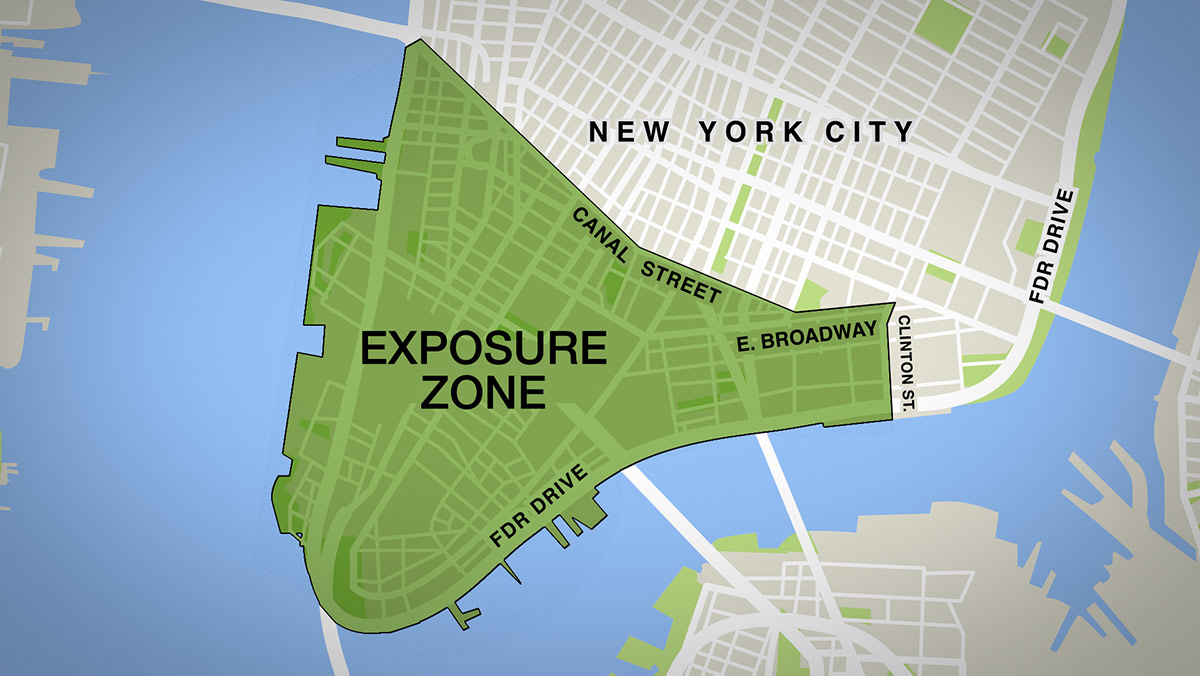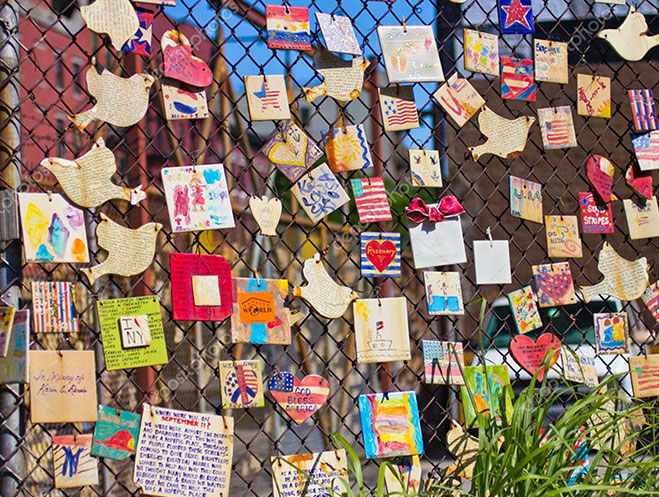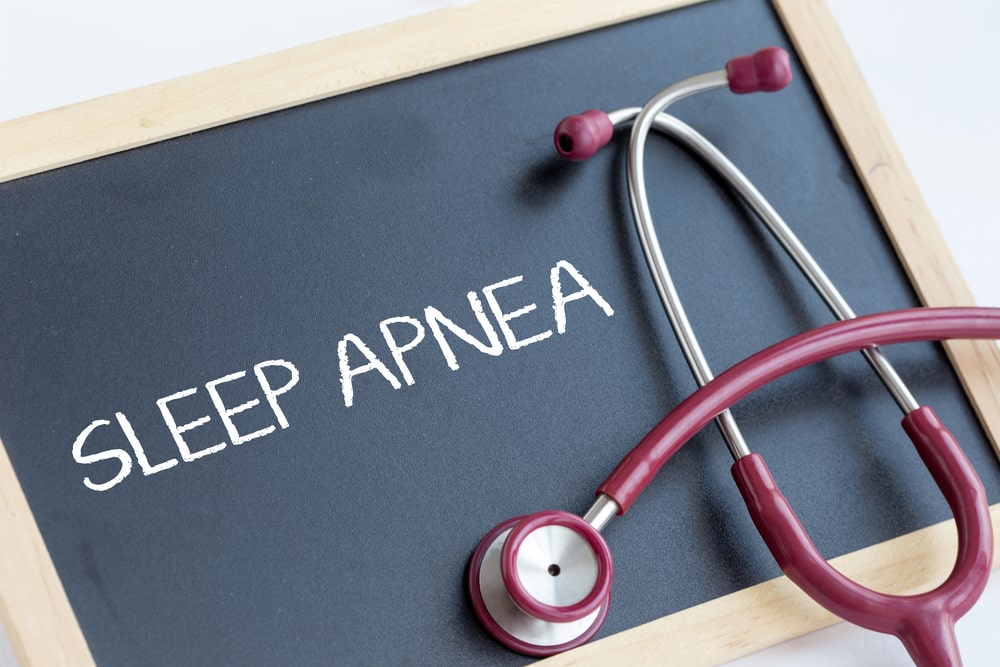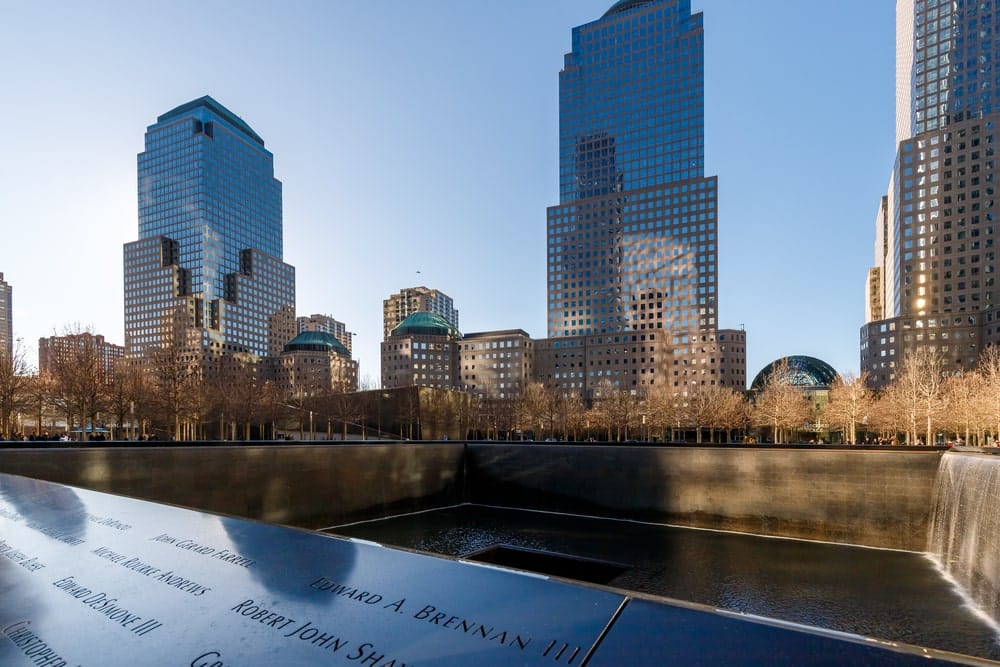
Multiple types of cancers are among the most devastating health effects of exposure to the toxic dust after the 9/11 attacks.
To date, the September 11th Victim Compensation Fund (VCF) has paid over $12 billion in compensation to over 53,000 victims who are still suffering the effects of 9/11-related cancers and other serious illnesses—or who have died from them.
Let’s take a look at the assistance available for victims, the connection between 9/11 dust and cancer, and how many people this issue has affected.
9/11-related cancer basics
First responders who attended Ground Zero fared very poorly, health-wise, in the aftermath of the attacks.
As well as the many respiratory problems they suffered, their exposure led to an elevated risk of developing cancer:
- 25% increased risk of prostate cancer
- 219% increased risk of thyroid cancer
- 41% increased risk of leukemia
Responders are 30 percent more likely to get certain cancers than others of a similar age, but they are not the only ones whose health was affected by the toxic dust cloud.
People who lived, worked, or studied in the exposure zone for up to nine months after the attacks have also suffered. For these victims (or their family members) who have not yet sought assistance for 9/11 cancers and other health conditions, it’s not too late to register to receive the required medical assistance and seek compensation from two federal benefits programs initiated under the James Zadroga 9/11 Health and Compensation Act (2010).
- The World Trade Center Health Program (WTCHP): free medical care, monitoring, and medication for approved physical and psychological conditions related to 9/11.
- The September 11th Victim Compensation Fund (VCF): financial compensation for pain and suffering, lost earnings, replacement services, and medical conditions.
It’s worth noting that a 35-percent higher cancer survival rate is associated with the free cancer monitoring and care provided by the WTC Health Program compared to the average cancer patient in the U.S.
How did 9/11 cause cancer?
Despite statements to the contrary by the EPA, the dust present at Ground Zero was highly toxic. Those exposed to it were risking their long-term health through extensive exposure to many known carcinogens in the days, weeks, and months that followed the 9/11 attacks.
Carcinogens present in the toxic dust include soot, benzene, cement, asbestos, heavy metals, polycyclic aromatic hydrocarbons, and dioxins. The substances not only caused breathing difficulties but also led to cancers for many.
In addition to lung cancers, exposure to toxins at Ground Zero may have increased the production of inflammatory T-cells (known to cause many other types of cancer) for those who spent extended time there.
How many cancer cases resulted from the 9/11 attacks?
Cancer is the second most common WTCHP-certified condition amongst responders and survivors.
Data reveals that over 35,000 cancer cases are known among responders and survivors exposed to the toxic dust after the attacks. This number increases daily despite the exposure that happened over two decades ago.
To put this into perspective, more responders and survivors of 9/11 have died of cancers related to their exposure to toxins than in the World Trade Center attacks themselves.
The number of 9/11 cancer victims is expected to increase further because many cancers are not diagnosed until decades after exposure. Many have long latency times and only begin to show symptoms in later life.
Over 6,300 people enrolled in the WTC Health Program have died from 9/11 cancers or other related illnesses.
When was cancer detected after 9/11 toxin exposure?
Exposure to toxins at Ground Zero was suspected to be harmful ever since responders started coughing soon after September 2001. However, it wasn’t until 2012 that some forms of cancer were added to the list of health conditions covered by the WTC Health Program.
Cancers with low latency times, like leukemia, prostate cancers, and thyroid cancers were the first to be included on the list and, since then, almost 20 different common types of cancer have been added—with over 75 cancers added in total (more details below).
What was in the 9/11 toxic dust cloud?
The 9/11 toxic dust cloud included many lethal chemicals and other substances that are known health risks when inhaled. These included:
- Pulverized glass
- Cement dust particles
- Heavy metals
- Asbestos (up to 2,000 pounds)
- Synthetic vitreous fibers (SVFs)
- Cadmium and polychlorinated biphenyls (known carcinogens)
- Persistent organic pollutants like dioxins (known carcinogens)
- Polyaromatic hydrocarbons (byproducts of jet fuel)
Even three months after the attacks, fires would reignite and release new toxins into the atmosphere.
What cancer-related issues arose from the 9/11 cleanup efforts?
As responders flocked to Ground Zero to help with cleanup and survivors did what they were asked to do and returned to live, work, and study in the area south of Houston Street in Lower Manhattan, they were not made aware of how many health risks they were exposing themselves to. Wall Street re-opened on September 17, 2001.
The main cancer-related issues that have afflicted responders and survivors ever since include the following:
- Lung cancer and mesothelioma: particularly from asbestos exposure, with numbers rising every year.
- Leukemia: survivors have a 41% higher chance of developing leukemia than the average U.S. citizen of the same age.
- Prostate cancer: aggressive versions of this cancer are far more common in responders than in other U.S. men of the same age.
- Colon cancer: often a secondary cancer that is triggered following a previous 9/11-related cancer diagnosis.
- Thyroid cancer: one of the most common types of cancer linked to exposure to Ground Zero toxins after 9/11—but survival rates are better than for many other cancers.
- Skin cancer: another common 9-11 related cancer (both melanoma and non-melanoma) that is usually treatable.
- Brain cancer: these are sometimes secondary tumors related to a previous 9/11-related cancer diagnosis.
Among many other 9-11-connected cancers are:
- Pancreatic cancer
- Kidney cancer
- Uterine cancer
- Bladder cancer
- Multiple myeloma
- Digestive system cancer
- Eye cancer
- Head and neck cancer
- Soft tissue cancer (sarcoma)
Other serious illnesses besides cancer have consistently afflicted large numbers of responders and survivors too. Most commonly, these include:
- Aerodigestive disorders: respiratory and digestive orders are some of the most common. These include asthma, gastroesophageal reflux disease (GERD), sleep apnea, and chronic rhinosinusitis/nasal inflammation.
- Psychological disorders: these include post-traumatic stress disorder (PTSD), depression, anxiety, and substance abuse. The VCF does not compensate for psychological conditions, but free healthcare monitoring and benefits are provided by the WTCHP.
- Neurological disorders: these include mild cognitive impairment and peripheral neuropathy, disorders that are not currently covered by the WTCHP, but which are under investigation for potential addition to the list.
Working with a knowledgeable 9/11 attorney can help victims apply for compensation and obtain free medical care. To discuss your situation and learn more about how we may be able to help you, please call Weisfuse & Weisfuse, LLP at 332-239-2238 or contact us online to schedule a free consultation.






